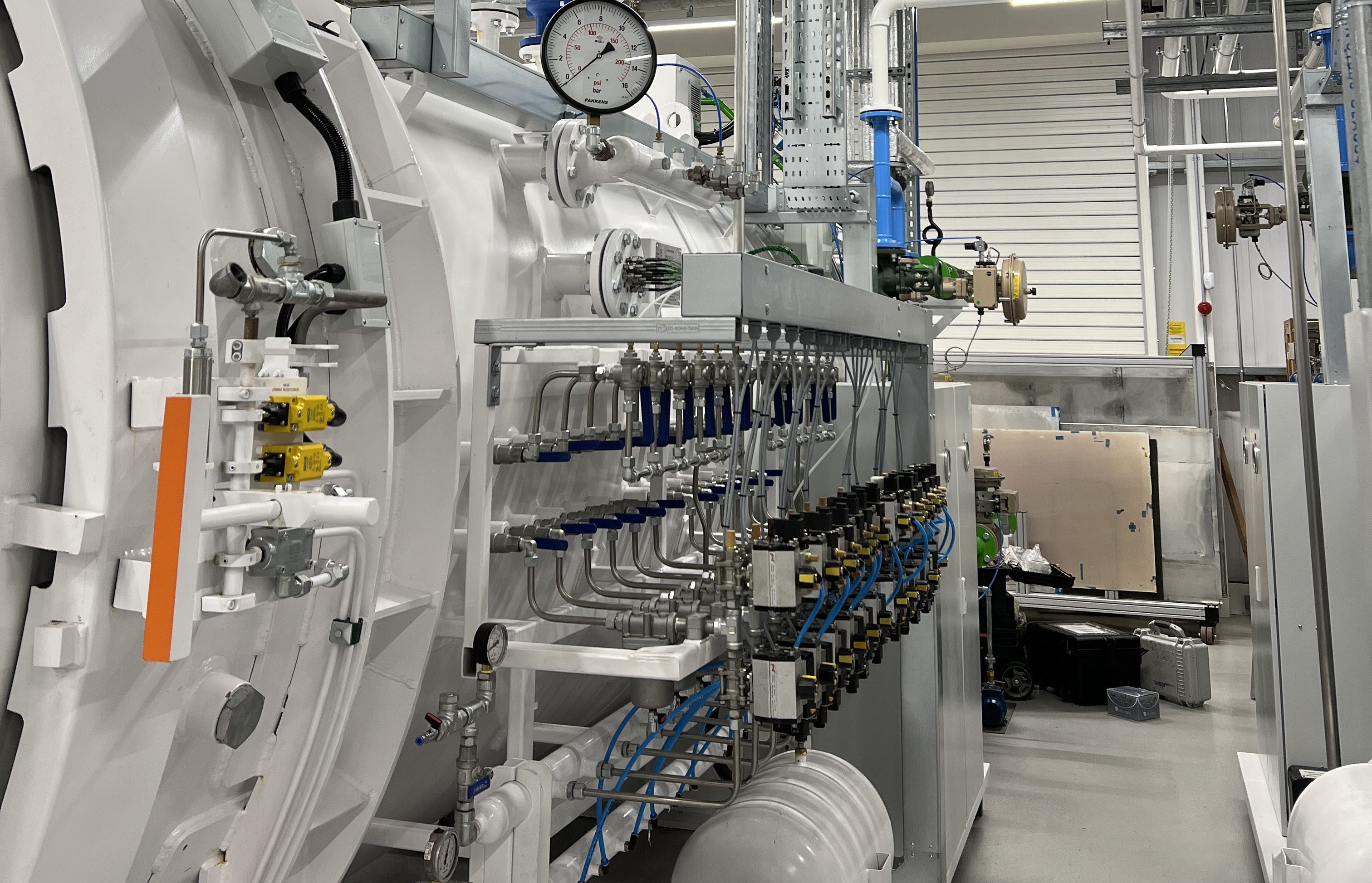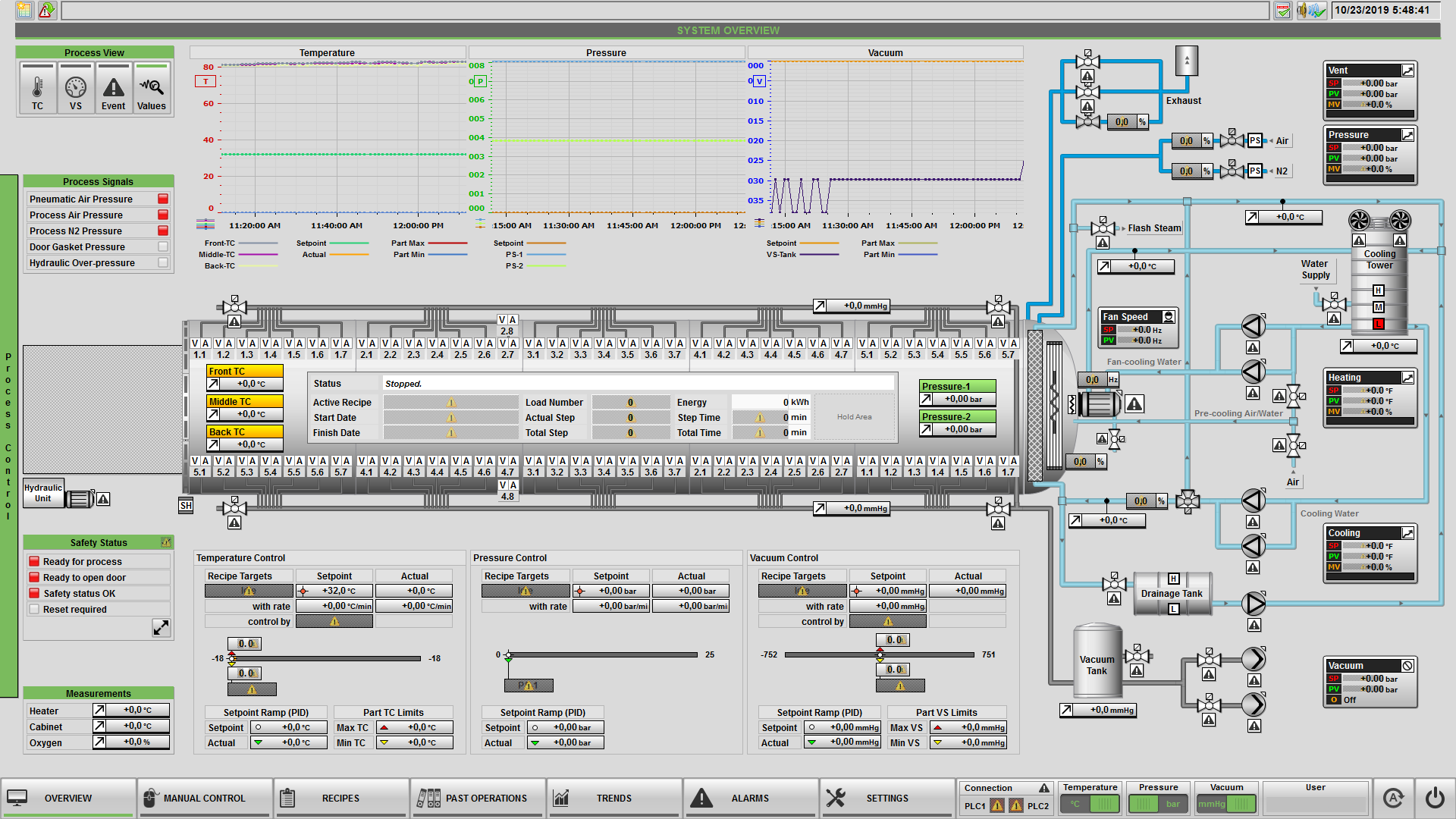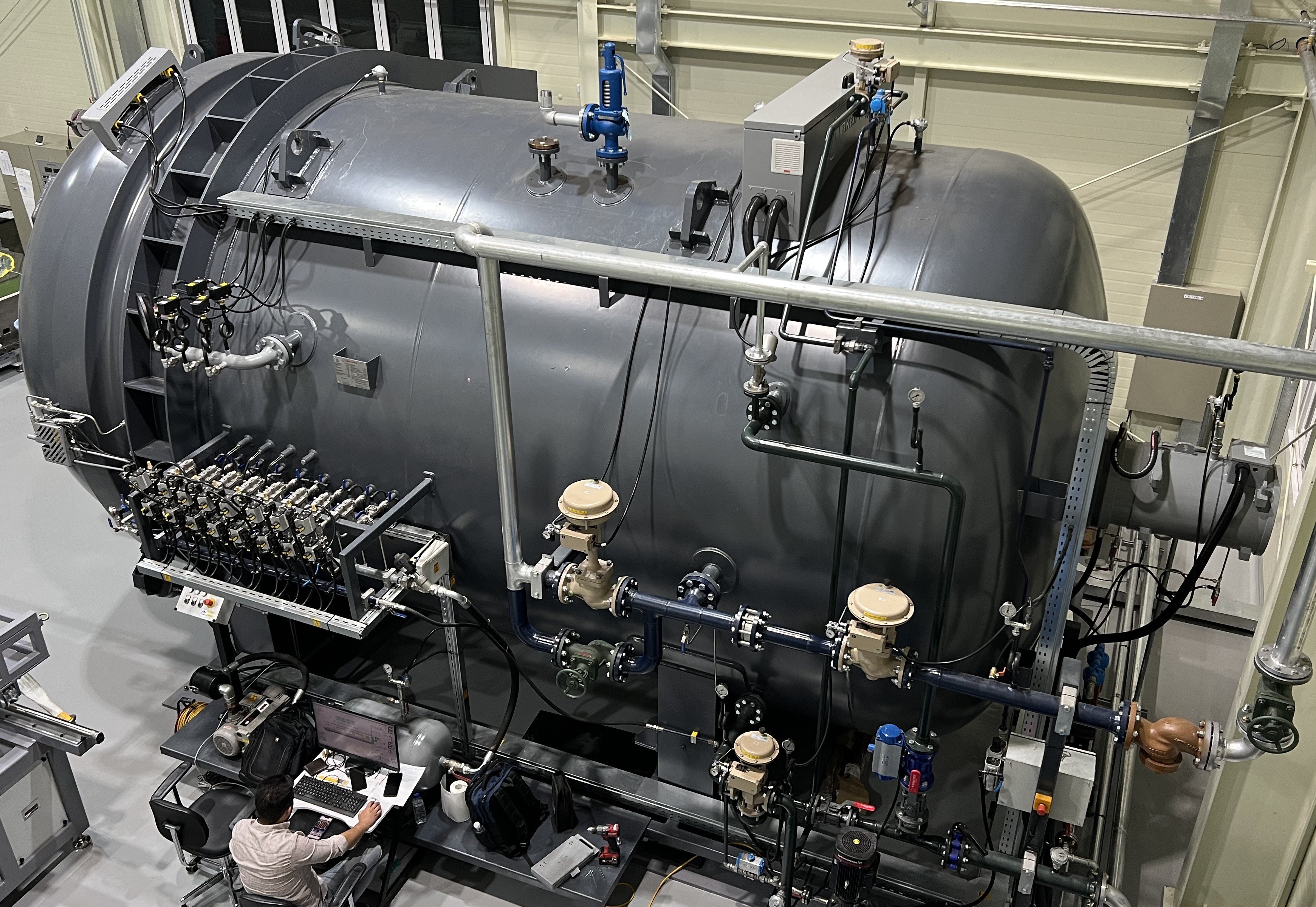Process Control in Autoclaves
Process Control in Autoclaves
Autoclaves play a critical role in many industries such as composite curing, laminated glass production, rubber vulcanization, AAC (autoclaved aerated concrete) production, sterilization, and dewaxing. In these systems, the precise control of key parameters such as temperature, pressure, and time is essential to ensure consistent production quality and maximum operational efficiency. This is where process control and industrial automation systems come into play.
Why is Process Control Important?
Effective control guarantees optimal performance while minimizing energy consumption. It ensures the homogeneous distribution of temperature and pressure, thereby improving product quality and consistency. These regulations not only prevent risks such as overpressure and overheating but also ensure operational safety and prevent critical equipment failures. To achieve these goals, the use of advanced control and automation technologies is indispensable. These systems continuously monitor parameters and make real-time adjustments, ensuring safe and smooth production operations.
Core Components of Process Control
Sensors and Measurement Instruments
- Pressure sensors: monitor pressure variations inside the autoclave.
- Temperature probes: measure the heat levels.
- Flow meters: control the flow of steam, air, or gas.
Sensors and measurement instruments are essential components for managing autoclave processes with accuracy, safety, and efficiency. By continuously monitoring temperature, pressure, and flow values, they provide accurate feedback to the automation system. This allows precise control of process parameters, resulting in energy savings and improved production quality.
Control and Regulation Components
- Control valves: regulate steam, water, and air inputs.
- Vacuum pumps: ensure that vacuum-bagged parts remain under optimal conditions for successful processing.
- Heating elements: provide temperature increase.
- SCR (Silicon Controlled Rectifier): controls the temperature.
- Circulation fans: maintain temperature control inside the autoclave, improve heat transfer, and ensure uniformity within the environment.
These components manage the critical parameters, ensuring the autoclave operates efficiently and consistently.

Control and Automation Systems
- Programmable Logic Controllers (PLC): Manage automated processes.
- PID Controllers: Precisely adjust temperature and pressure.
- HMI (Human-Machine Interface): Allow operators to monitor and adjust parameters in real time.
- SCADA (Supervisory Control and Data Acquisition System): Ensure monitoring, data recording, reporting, and guarantee service continuity through system redundancy.
Control and automation systems play a critical role in ensuring the stability, repeatability, and safety of autoclave operations. By providing real-time monitoring and intervention capabilities, they optimize process parameters, minimize human errors, enhance production efficiency, and reduce energy consumption.
HMI and SCADA systems both play an important role in autoclave operations, but they show clear differences in terms of functionality and scope. The following table summarizes the key differences between these two systems:
|
Feature |
HMI |
SCADA |
|
Recipe creation |
Limited |
Unlimited |
|
Part identification |
Not available |
Available |
|
Reporting and graphics |
Simple graphs and reports in .csv format |
Advanced reports and graphs in .pdf format with secured data |
|
Calibration |
Manual correction via offset |
Automatic 3-point calibration |
|
Maintenance management |
Limited |
Advanced |
|
Memory capacity |
Limited data recording |
Extensive and long-term data recording |
|
ERP and barcode tracking |
Not supported |
ERP integration and barcode tracking available |
|
Unit conversion |
Not supported |
Available |
As can be seen, SCADA systems offer much broader control, traceability, reporting, and integration capabilities, while HMI systems primarily serve as a basic user interface. In autoclave applications, if the goal is to achieve high efficiency and full traceability, the use of SCADA systems provides a major advantage.
For SCADA systems, higher-capacity PLC types are preferred. They offer high processing power, expandability, and the ability to manage more complex processes. Therefore, SCADA systems are particularly advantageous for managing and reporting large and complex data sets.
HMI systems, on the other hand, are ideal for smaller and less complex applications; they are more cost-effective and sufficient for basic automation needs.
In addition, Akarmak offers its own solutions for autoclave control systems and presents its most advanced developments for the aerospace composites sector with its ACAS ( Akarmak Composite Autoclave SCADA system.
Akarmak’s ACAS system is designed to provide full integration with Industry 4.0 solutions, facilitating the digitalization of production processes and data-driven management. Thanks to real-time data analysis, ACAS not only optimizes production processes but also enables proactive decision-making to enhance performance management. Furthermore, by integrating preventive maintenance and wear management tools, ACAS ensures more reliable production cycles, minimizes unplanned downtimes, and reduces maintenance costs.

A Closer Look at ACAS: Excellence in Control at Akarmak
Akarmak offers its own control solutions with the ACAS (Akarmak Composite Autoclave SCADA) system, specifically developed for the most demanding sectors, such as composite production.
ACAS combines the latest technologies to provide:
- Ultra-precise real-time monitoring: ACAS continuously tracks and analyzes every process parameter, enabling immediate intervention in case of any deviation.
- Fully customizable process cycles according to product requirements: The cycles can be tailored to meet the specific needs of each product, providing great flexibility for various production processes.
- Part identification: Thanks to advanced part identification, the system automatically issues an alert if a part not compliant with the recipe is loaded, preventing production errors.
- Complete traceability of critical process parameters: ACAS records and monitors all essential parameters such as temperature and pressure, ensuring the accuracy of every step in the process.
- Analysis tools for recipe and process optimization: Advanced analysis tools help optimize recipes, increasing production efficiency while saving energy.
- User interface designed for industrial environments: A user-friendly interface enables operators to perform tasks quickly and accurately.
- Integrated maintenance and fault diagnosis: The system sends maintenance alerts and generates detailed reports in case of malfunctions, minimizing downtime and costs.
- SQL-based infrastructure: SQL-based database management and analysis ensure secure and fast data handling.
- Quality cards: Quality cards are created for each part to support quality control, recording production data and quality standards to enhance traceability.
In summary, at AKARMAK, we integrate the latest automation and process control technologies into our autoclaves. ACAS (Akarmak Composite Autoclave SCADA) provides a solution that optimizes production processes, guarantees operational accuracy, and ensures the production of high-quality products.


